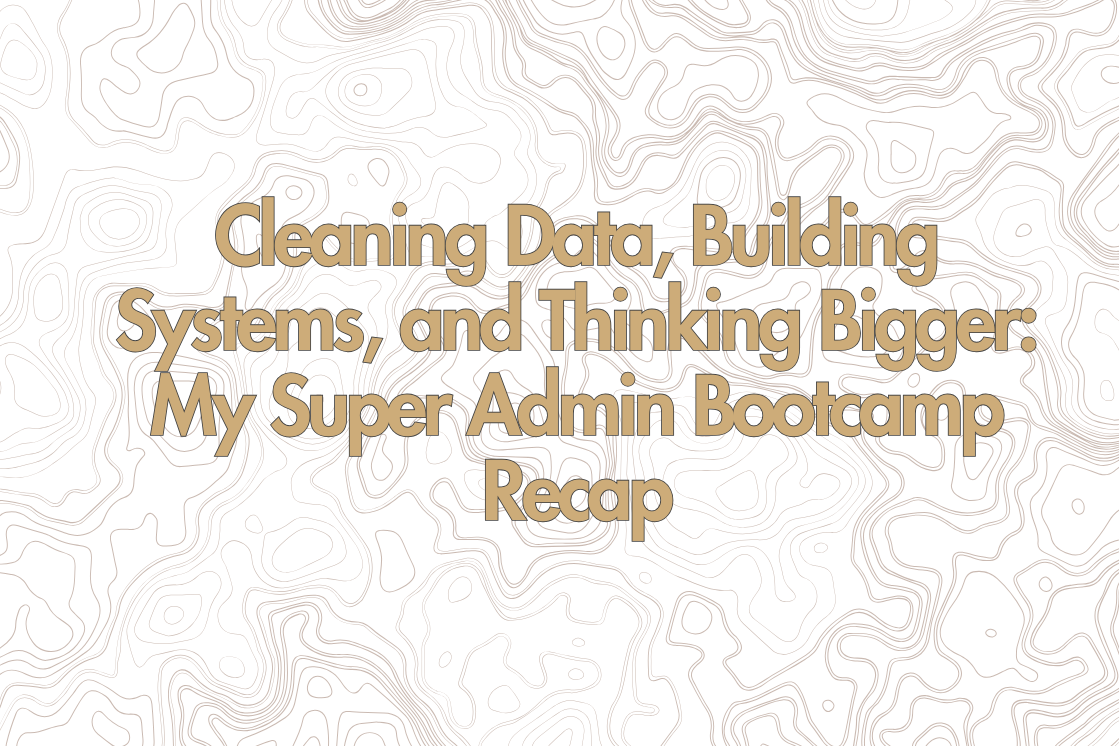Inside HubSpot’s RevOps Bootcamp: Takeaways That Changed How I Work
Like a lot of people, I kept hearing “RevOps” everywhere in the HubSpot community and to be totally honest, I wasn’t exactly sure what it meant. I took the Revenue Operations Certification out of curiosity, and that’s when it clicked: as a freelance HubSpot consultant working across marketing, sales, and service, I’d been doing RevOps work all along - I just didn’t have the label for it.
With a background in customer service, admin ops, marketing, and sales support, RevOps connected everything I’d been doing. I joined HubSpot’s RevOps Bootcamp not because I was new to the concept, but because I wanted a more structured framework to approach RevOps projects. This bootcamp reminded me that aligning teams isn’t just about internal efficiency it’s about creating a better, more consistent experience for the customer.
What RevOps Really Looks Like
I understood RevOps as aligning sales, marketing, and service but the bootcamp reframed it as the operating system powering a delightful customer experience. The concept of increasing force and reducing friction helped me see how RevOps impacts growth.
The flywheel metaphor finally made sense on a systems level. And having a checklist of symptoms for silos? Incredibly helpful. It’s something I now reference regularly when helping clients spot misalignment.
Mapping the Mess (and the Fix)
This module changed how I work.
We talked about mapping current state processes and not just what should be happening, but what actually is. I brought that idea into a client project the same week and asked to pause development so we could map the current process first. That one step gave me a clearer understanding of a complex HubSpot setup and immediately built trust with the client.
Going forward, current state mapping is non-negotiable. It simplifies everything: spotting inefficiencies, identifying automation opportunities, and setting a foundation for future improvements.
Turning Ideas Into Strategy
Once you’ve mapped the current and future state, the next step is identifying which changes will actually move the needle. This part of the bootcamp made me see my work not just as “fixing” things, but as being responsible for proactively driving business goals.
The process of future state mapping helped me think more strategically about how to structure a CRM or campaign. It’s not just about solving pain points - it’s about helping teams work better, together, toward shared goals.
Building and Protecting a Strategic Roadmap
We’ve all been in situations where reactive tasks drown out the strategic work that actually drives growth. This bootcamp gave me a framework to protect that time and show the value of prioritization.
Audits, process maps, and stakeholder input should drive your project roadmap - not just gut instinct. And when you prioritize by impact, effort, and change management, it’s easier to get leadership buy-in and avoid spinning your wheels on the wrong things.
Measuring and Communicating Success
Another lightbulb moment: you can’t prove impact after the fact. Every project needs to have clear success metrics from the start.
I’ve already started documenting initial values for key metrics like lead conversion rates and time-to-contact so I can demonstrate improvements more clearly. Whether I’m reporting to internal stakeholders or agency clients, I now know how to tell a story with data that reflects the real value of RevOps work.
Growing in RevOps (and Hiring for It)
RevOps is one of those roles that blends so many skill sets: technical, strategic, operational, and relational. There’s no one right background. I’ve seen RevOps success from people coming out of marketing ops, sales enablement, project management, and more.
But growing a RevOps team requires more than just budget. It takes leadership alignment, a roadmap, and clear success tracking. This bootcamp gave me language and tools to help clients figure out whether they need an internal hire, agency, or both.
Final Thoughts
After this bootcamp, I feel more confident in how I approach RevOps projects and how I talk about them with clients. The current state mapping module alone changed the way I onboard into new accounts, and it’s already made a big difference in my results and relationships.
RevOps isn't about knowing everything. It’s about asking better questions, aligning your systems with strategy, and always looking for ways to reduce friction for both your team and your customers.
If you're interested, I also shared my key takeaways from HubSpot’s Super Admin Bootcamp, which focuses more on the hands-on technical side of HubSpot administration.

 By
By
